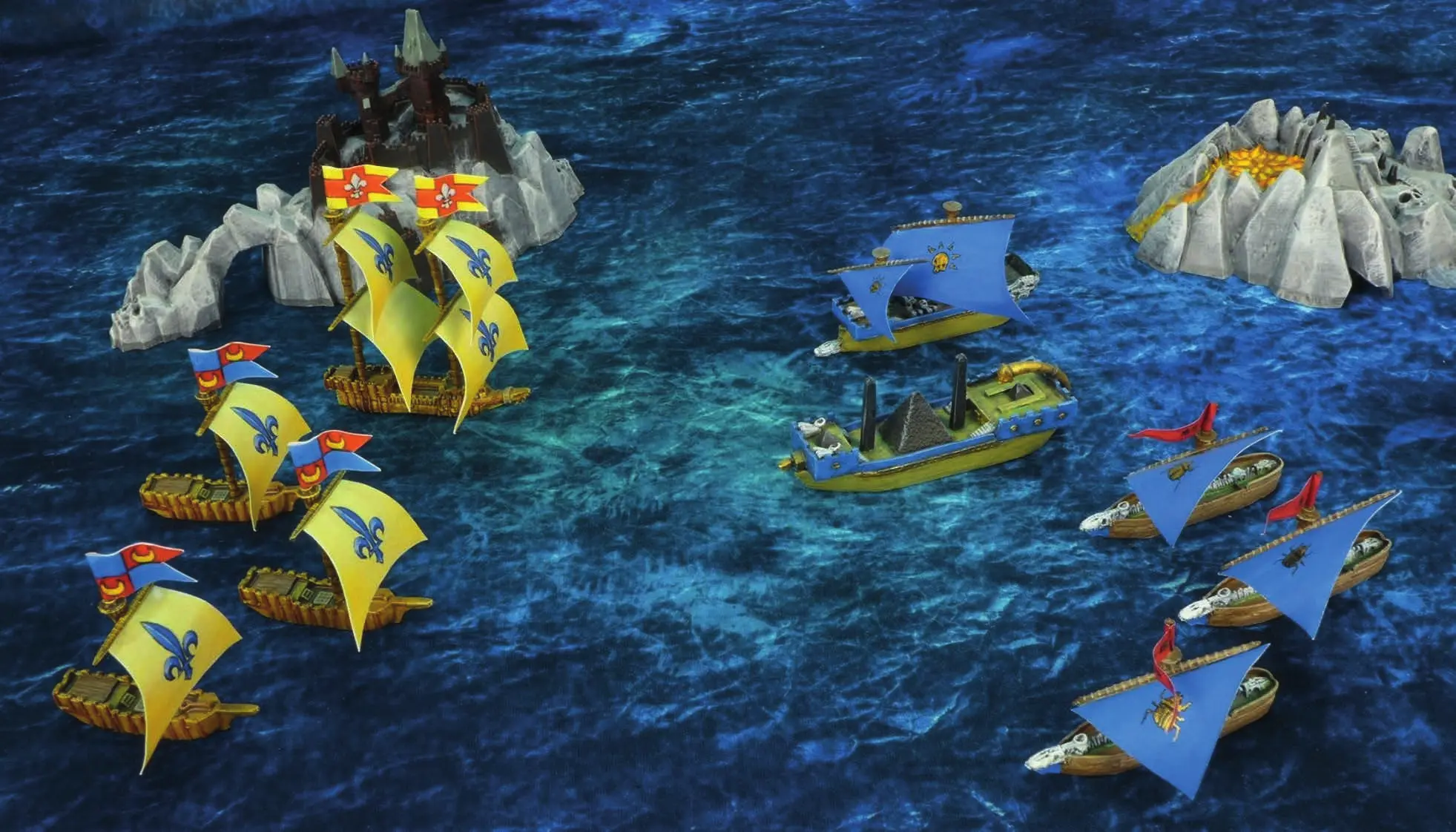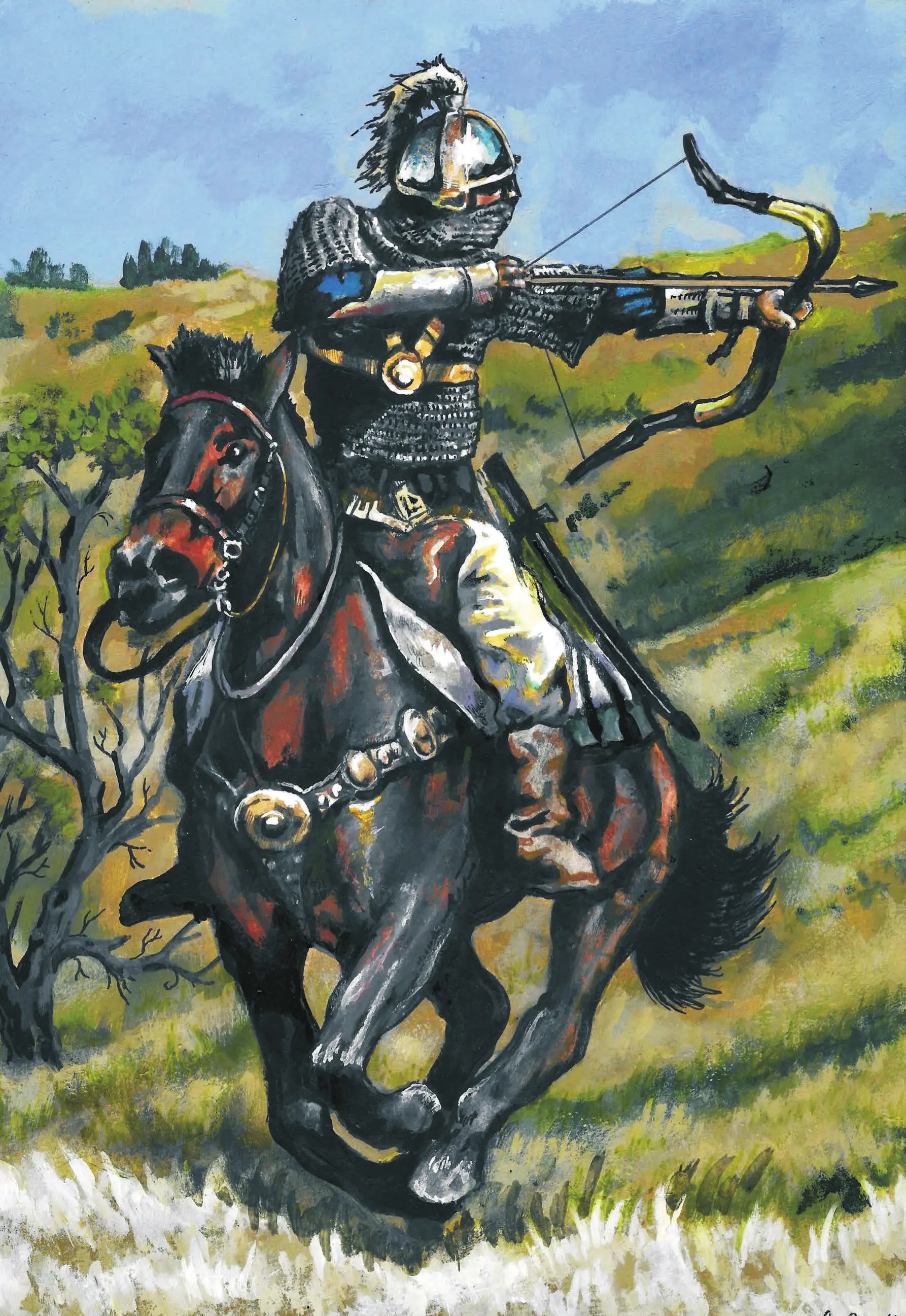Campaigns of Conquest
Introduction
These campaign rules are based on the rules written by Rick Priestly and Jervis Johnson for the Mighty Empires campaign supplement designed for the 8th edition of Warhammer. The supplement included a map consisting of hexagonal tiles and a variety of markers. Here the rules are adjusted for the Warmaster environment. Though the rules were designed primarily for the original map supplement, it can be used for any map system as long as it is segmented into a sufficient number of fields.
In our experience complex campaign systems tend to stumble and die out rather quickly. The philosophy of this system is to keep it as simple as possible yet still motivating to fight and contest over new territory. In the current digital age it is possible, and even more convenient to control the whole campaign on-line rather than have to arrange for all the players to meet together for the campaign to progress.
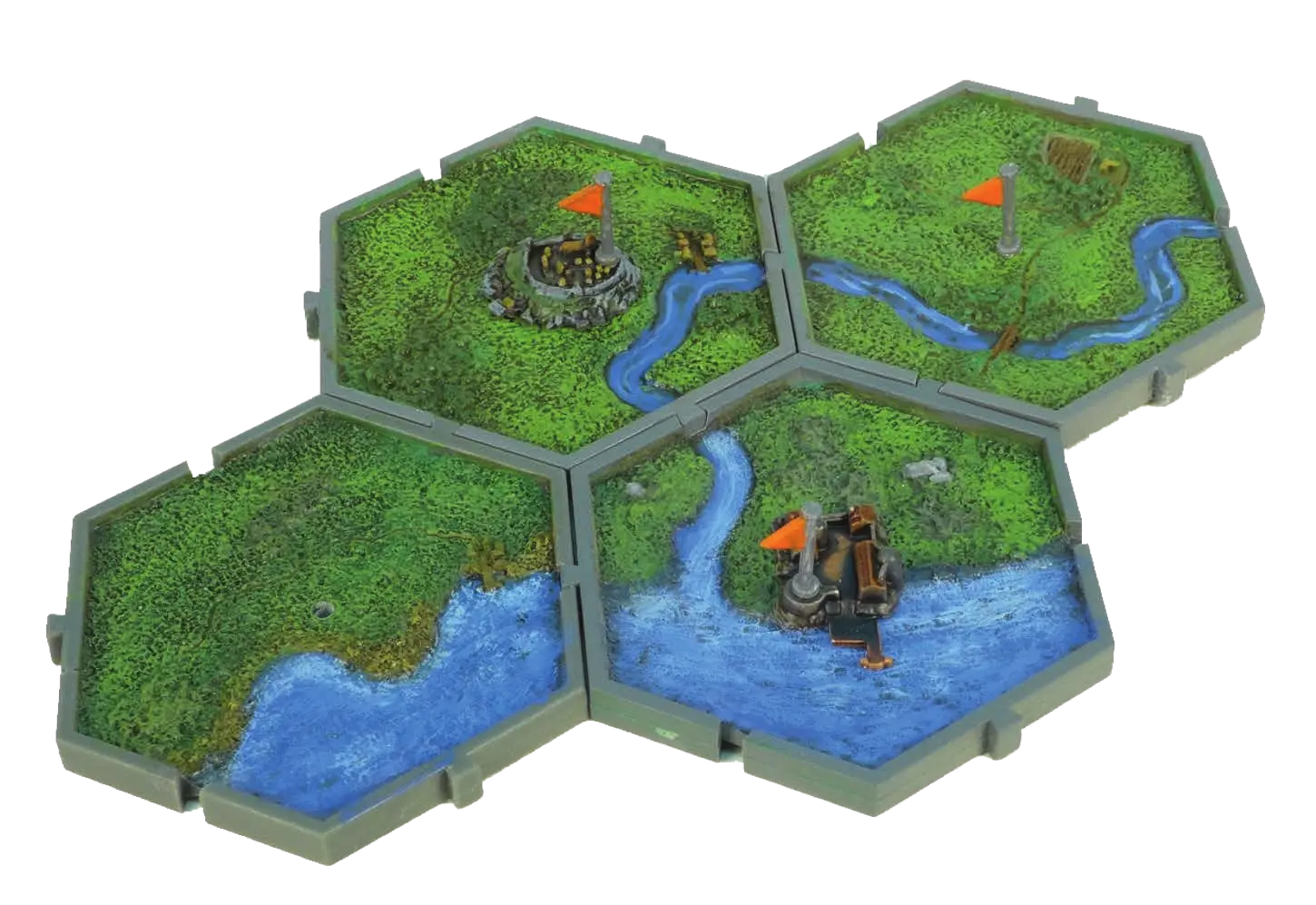
Warmaster campaign
You will need at least two (preferably three or more) rival players who will compete for territory until one player conquers the others or establishes an empire of such size and power that he is declared the victor. During each round of the campaign the participating players play a game of Warmaster and, depending upon their degree of success, they can expand their territories into their neighbours’.
The map is used to show the territory controlled by each player. Players begin with one tile marked with a banner in their chosen colour. When games of Warmaster are fought, players are awarded ‘Empire Points’ that are used to claim adjoining tiles as explained below. As a player’s empire expands they place banners on the tiles to mark their territory.
The winner is the first player to carve out an empire of ten tiles – this is a simple way of working out who has won and you can set this target higher or lower as you wish.
Starting a campaign
Unless you have the original supplement with plastic tiles and markers, you will need to create a map divided into sufficient number of hexagonal tiles. The map needs to have at least seven tiles for each player taking part. There are various tile types. The rules distinguish common wood/countryside tiles, river tiles, mountain tiles and shore tiles. You will also need banner markers in a distinctive colour for each player. Further markers used in the rules are mines, ports, castles, cities and objectives.
Once you have a map, each player chooses a capital city from amongst the cities on the campaign map. Choose an order in which players pick an unclaimed city from the map. A capital cannot be chosen next to another capital – there must be a gap of at least 1 tile between them. If there are no available capital cities left on the map then the player may add a new city to claim as their capital. Once each player has selected their capital you are ready to play. Note that no others tiles are claimed at this stage – players will get to do that as the game progresses.
It is good idea to place some objectives on the map to motivate players to fight over them (see Objectives). These should be spread over a neutral area so all players have a similar chance to reach them.
The largest empire
During the campaign players will often need to do things in a certain order depending on the size of their empires. This is determined by counting the number of tiles each player controls at the start of each turn. City tiles count as two tiles when working out the size of a player’s empire.
Break any ties with the number of cities, then the number of castles, and finally a dice roll.
This order remains for the whole turn, even if circumstances change.
Sequence of play
The campaign is fought over a number of rounds. Ideally, all players will be present for each round or alternatively (and more likely) games can be organised online through internet forums. There are also many online dice roll rooms on the internet these days, which are ideal to solve all the required rolls online. A typical group of players will usually work through one round every week, but it all depends on how often you can get together. It is even possible to play a whole campaign over a single weekend. At the end of each round, players must organise and play any Warmaster games that are required the before next round can proceed. In each round all players work their way through the following sequence of play. All the players carry out the event phase, then all carry out the revenue phase, and so on.
1. Events phase
Each player picks one event from the event chart, starting with the player with the smallest empire. A player cannot pick an event that has already been chosen by another player, unless all the events have already been chosen at least once.
-
Fool’s Gold – Pick a Player. That player cannot collect any revenue during this round.
-
Building Boom – You may place a castle, mine or port on any tile that you control, or replace a castle you control with a city.
-
Disaster – Pick one player. They must roll a D6 for each castle, city, port or mine. On a roll of 1 it is destroyed.
-
All or Nothing – You receive an extra 2 empire points this round as long as you don’t lose or draw any battles. If you lose or draw then you receive no empire points at all this round.
-
Scouts – In any battles you fight in this round, your opponent must deploy their whole army before you deploy your army, and you decide who gets the first turn.
-
Diplomacy – Pick one player. They may not issue a challenge against you this round.
-
Land Grab – The first tile you claim this turn only costs 1 empire point rather than the normal 2.
-
Elite Army – In any battles you fight this round, you may take one unit over the Min/Max limit.

2. Revenue phase
Each player collects revenue from any mines they control. The gold is added to the player’s treasury each round and can be spent or saved up to spend in future rounds. Players must keep track of how much gold they have.
Mines generate 2D6 × 10 gold pieces each round if they are on a river tile, and 3D6 × 10 gold pieces each round if they are on a mountain tile.
Exhausting a mine
If all of the dice rolls are the same (e.g. 1–1 on a river, or 5–5–5 on a mountain) then the mine is exhausted. Collect revenue as normal and then remove the mine from the map, but leave the banner behind to show who controls the tile. A new marker may be created on the tile later in the game if desired.

3. Challenge phase
Each player must issue a challenge to another player, starting with the player with the smallest empire. The challenger and the player they challenged must fight a Warmaster battle in the battle phase. A player who has been challenged cannot issue a challenge that round – his army is already committed to battle!
Forming a team
A player can challenge a player who has already been challenged to a battle. The player who has been challenged can choose to either fight one battle against all his challengers (see Team battles), or he can choose to fight a series of individual one-on-one battles against each of his challengers in turn (see Multiple battles). Any number of players can form a team in this way.
Breaking up a team
A player can challenge a player who is already part of a team – this will break up the team. For example, if Andy and Phil have formed a team against Bob, then Max could challenge one of them in order to break up the team.
If you do this then the player you have challenged fights a battle with you, leaving the remaining team member(s) to fight their opponent. So, carrying on our example, if Max challenges Phil, then Max and Phil fight a battle, leaving Andy to fight against Bob.
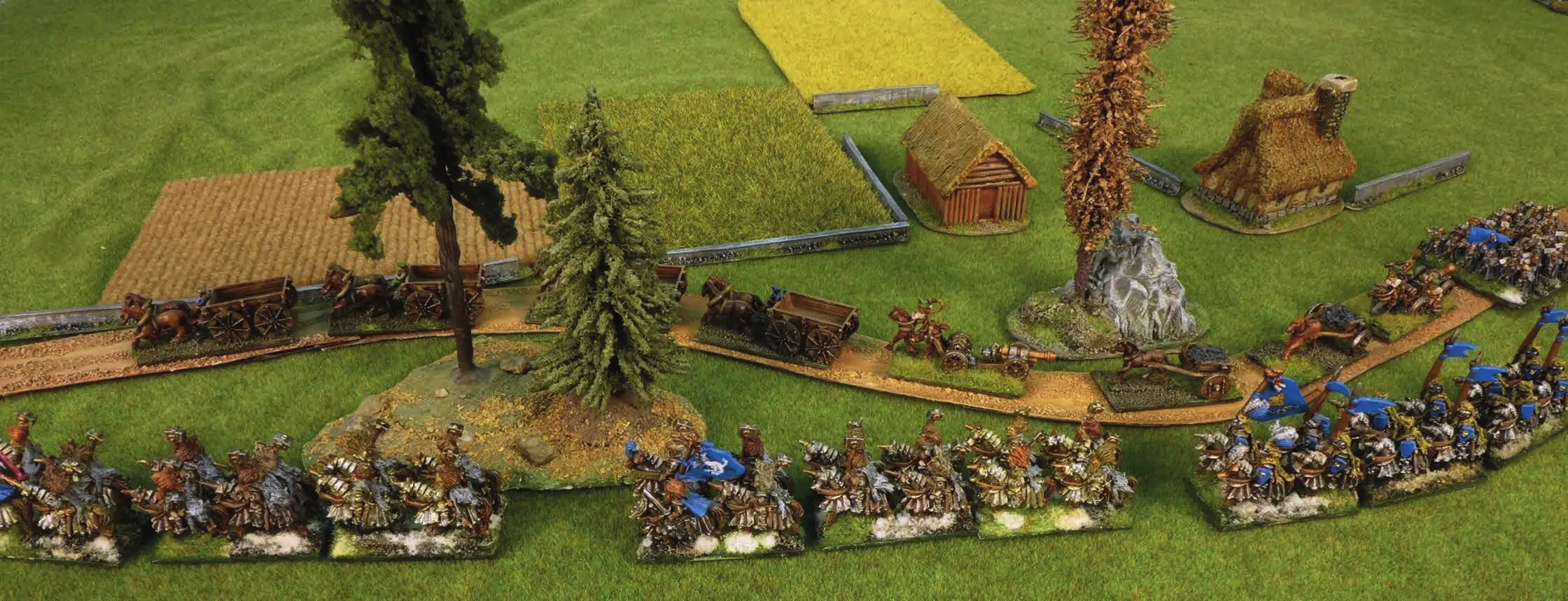
4. Battle phase
Players can agree to fight battles of whatever size they find convenient – there is no need for all battles to be fought at a preset size or with a pre-selected army list. Just play Warmaster games as you normally would at 1000pts, 2000pts, 3000pts or whatever is your preferred size.
Army bonuses
Each player receives a bonus to use when they select their army.
-
The player who has the largest empire receives a bonus of ¹⁄₄₀ of the total army points. So in 2000pts battle he may field 2050pts, in 1000pts he may field 1025pts.
-
Any player may spend up to 200 gold pieces from his treasury to add extra points to their army. Each gold piece increases the player’s points limit by ¹⁄₂₀₀₀ (0.05%), so spending the maximum 200 gold pieces adds ¹⁄₁₀ (10%) to the total army points limit.
Gold spent Percentage pt army 2000pt army 3000pt army 0.05%
1000.5
2001
3001.5
10
0.5%
1005
2010
3015
20
1.0%
1010
2020
3030
50
2.5%
1025
2050
3075
100
5.0%
1050
2100
3150
150
7.5%
1075
2150
3225
200
10.0%
1100
2200
3300
Multiple battles
Sometimes a player will have to fight more than one battle in a round (see Challenge phase). A player can use all bonuses they are entitled to in each and every battle they fight that round. However, gold spent in one battle is used up, and may not be used again in a later battle.
Team battles
Sometimes players will fight together as a team (see Challenge phase). When this happens the team must split the total points value of their force between all the players in the team in a mutually agreeable manner. For example in a 2000 point game a two-player team might take 1000 points each, or one might take 1500 and the other 500 and so on. Each player is then allowed to add bonuses to their individual total as described above.
-
Each player in a team controls his own army. Both players move their units in the movement phase, both players shoot in the shooting phase etc.
-
Units may not charge, shoot or cast magic spells against units controlled by another player in the team.
-
Characters from one army may not join units belonging to another team member’s army.
-
Commanders can only command units from their army.
-
Wizards can only cast bonus spells on their own troops.
-
Only units that belong to the same army count as “friendly units” as defined by the rules. Units belonging to another team member’s army do not count as friendly units.
-
In team battles the break point of the whole team’s army is combined, so a side’s armies withdraw only when total break point is reached.
-
Each army has its own general. If one general is killed, their army doesn’t withdraw, however the team can no longer win the battle. They can only lose or draw.
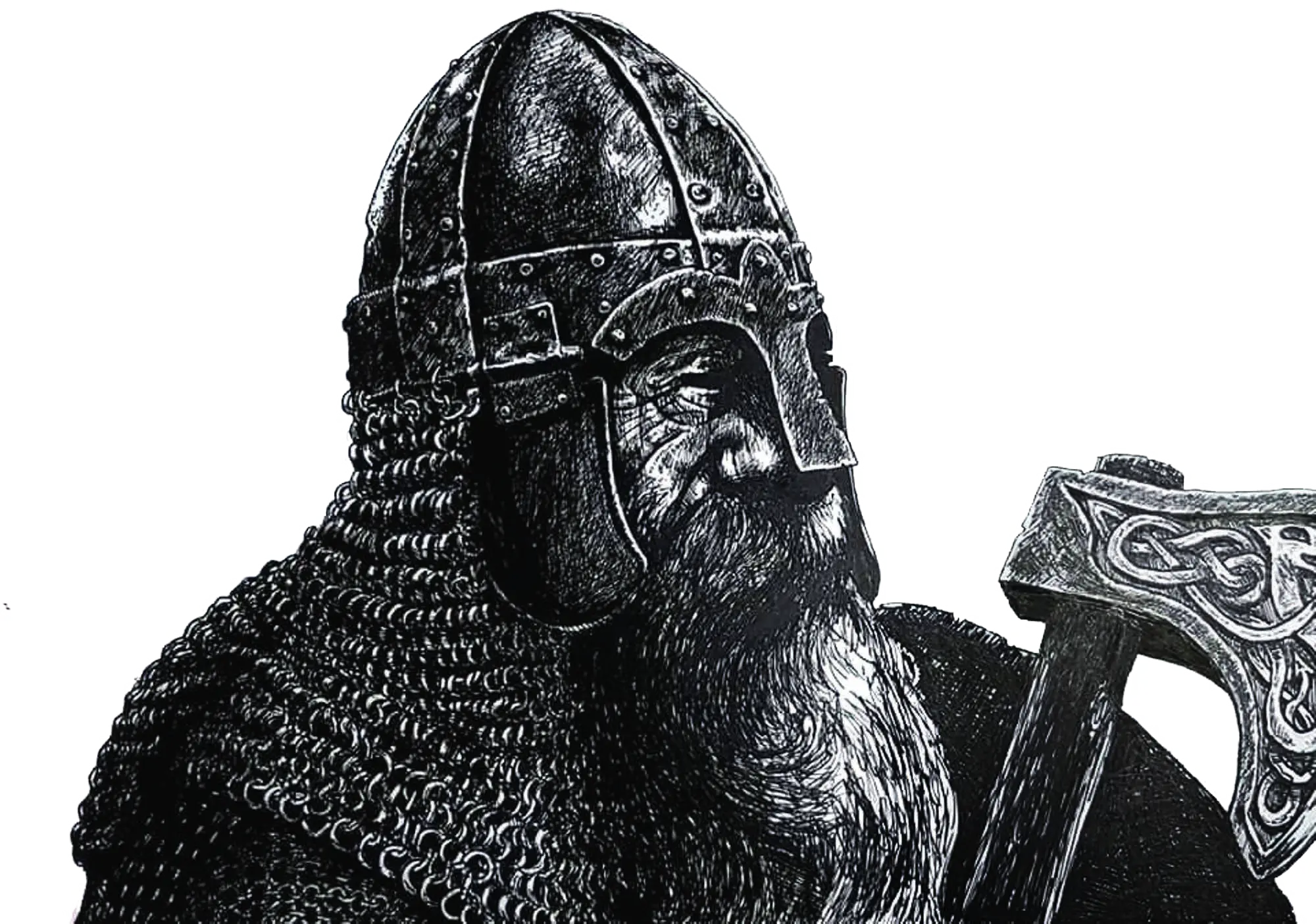
5. Conquest and building phase
When you play a game of Warmaster you earn empire points as shown on the chart below. Empire points are used to take territory, to build cities, castles, ports or mines or to remove territory from a rival player. Players take it in turns to spend their empire points, starting with the player with the smallest empire and working up.
Earning Empire Points
The number of empire points a player has to spend depends on how well they did in the battle phase. Players who lose earn 1 point, drawing players earn 2 points, and winners earn 3, 4 or 5 depending upon the level of victory.
-
Lose – 1 Empire Point. The army is forced to withdraw while earning less victory points than the the opponent or the army earns less victory points when no side withdraws. A player also loses when he surrenders.
-
Draw – 2 Empire Points. In case one army is forced to withdraw but gains more victory points than its opponent the battle is a draw and both armies get 2 points. A player also gets 2 points when no side withdraws but they have more victory points than the opponent.
-
Minor victory – 3 Empire Points. The army is victorious when it forces the enemy to withdraw and earns more victory points at the same time.
-
Major Victory – 4 Empire Points. The army breaks the enemy while not losing more units than half of its break points.
-
Massacre – 5 Empire Points. The army massacres an enemy by forcing him to withdraw while not losing more than 25% of its break points.
In a team game all players in a team earn one less empire point (so if their side wins a victory each player earns 2 empire points).
If a player fights more than one battle in a turn then they must average out the empire points for the battles they fought, rounding any fractions down. For example if a player fights two battles, loses one and scores a major victory in the other, then they would score (1+4)/2 = 2½, rounded down to 2 empire points.
Spending Empire Points
Empire Points can be spent as follows. Only one unused empire point can be carried over to the next campaign round.
-
Claim tile (2 EP) – place a banner on a tile without a banner that is adjacent to one of your own tiles.
-
Conquer tile (3 EP) – Replace another player’s banner from a tile that is adjacent to one of your own tiles with your own. You must have fought and won a battle against the player in the preceding battle phase.
-
Build (1 EP) – Add a castle, city, mine or port to a tile you already control (see Buildings).
-
Raid (1 EP) – The player raids an unclaimed tile to gain 3D6 × 10 gold pieces.
Alternatively they can raid a territory of another player. They gain 2D6 × 10 gold pieces from the treasury of the player whose territory was raided. They cannot gain more gold pieces than the raided player actually has, and also cannot raid gold guarded in castles and cities (see Buildings).
-
Plunder (2 EP) – A player who wins a battle against another player you can plunder one of the loser’s tiles. Choose one of the opponent’s tile, it need not border your own. If there is a mine or port, remove it. If there is no building on the tile, remove the opponent’s flag. Tiles with castles or cities cannot be plundered.
- Mountains
-
It costs 1 extra empire point to Claim or Conquer a Mountain tile.
- Castles or Cities
-
It costs 1 extra empire point to Conquer a tile that contains a castle or city.
Buildings
Players can spend empire points to build a castle, city, mine or port on a tile they control. Alternatively, they may instead replace a building on a tile they control with a different one. There can be only one building on each tile.
- Castle
-
A castle makes it more difficult for players to conquer the tile (see above). Castles can also hold 25 gold pieces against enemy raiders.
Castles cannot be built on marsh tiles.
- City
-
To build a city there must already be a castle on the tile. Players may upgrade a castle in the same turn in which it was built, with the city replacing the castle.
The tile counts as having a castle and in addition counts as two tiles when working out who has the largest empire.
Cities cannot be built on mountain or marsh tiles.
- Mine
-
Mines generate gold pieces in the revenue phase. They can only be built on river or mountain tiles.
Players can spend gold from their treasury to increase the point size of your army in a battle (see Revenue phase). Gold mines on a river generate 2D6 × 10 gold pieces, gold mines in a mountain generate 3D6 × 10 gold pieces.
Mines on tiles that are conquered are destroyed.
- Port
-
Ports can be built on river or shore tiles.
A player with a port can claim and and conquer river or shore tiles which are not adjacent to the player’s own tiles.
Objectives
- Mage Tower
-
Once per battle, a player who owns a tile with a Mage Tower may add +1 to their spell casting roll.
- Dwarf Brewery
-
Once per battle, a player who owns a tile with a Dwarf Brewery may re-roll one save roll in each round of a single combat phase.
- Orc Idol
-
Once per battle, a player who owns a tile with an Orc Idol may add D3 attack dice to a single unit during a single combat phase.
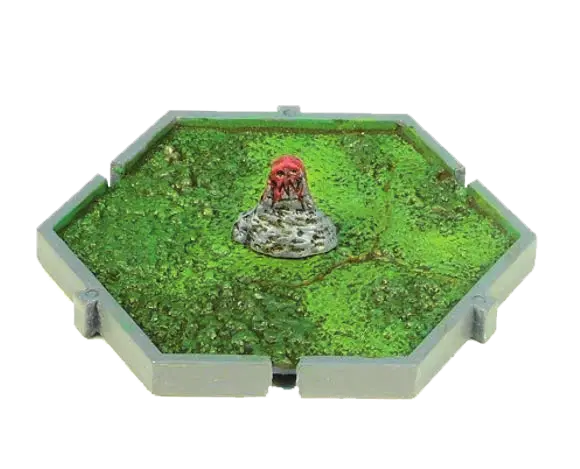
How to win
A player wins instantly when they claim their tenth tile, or if they knock any other player out of the game by conquering the last tile that player controls. Tiles that contain a city count as two tiles for determining when a player wins the game.

Siege
Warmaster has a well-written siege system. Because there are fortified places such as castles and cities in the campaign system it would be shame not to include a the possibility of siege battles. A siege battle requires special terrain and models (fortress walls, siege towers, ladders etc.). It may also slightly break the flow of the campaign. For these reasons siege battles are considered only as an option for players who wish to play them. There is no need to play siege battles in your campaign if you don’t want to. Siege battles are played only when both players agree to do so.
Into the breach!
When a player wins a battle and decides to conquer a loser’s tile with a castle or city, he can do it either in the standard way or, if both players agree, they can start a siege. When players decide to start a siege, the tile is conquered for 2 empire points as usual, however the castle or city remains in the defender’s hands. This tile counts as a half of a tile for both players for the purpose of determining the largest empire.
The situation remains until the castle or city is conquered or the whole map tile is conquered back. To conquer the castle or city both players must play the Into the breach scenario. Of course, the conquering player is the attacker. If the besieger wins the siege battle, they conquer the whole tile. If they fail, the siege goes on. One such attempt to conquer the castle or city can be made per campaign round.
Until the castle or city is conquered the defender has a chance to conquer the map tile back in the usual manner. No extra 1 empire point is needed to pay for conquering a tile with a castle or city on it as it is being held by the player’s own troops.
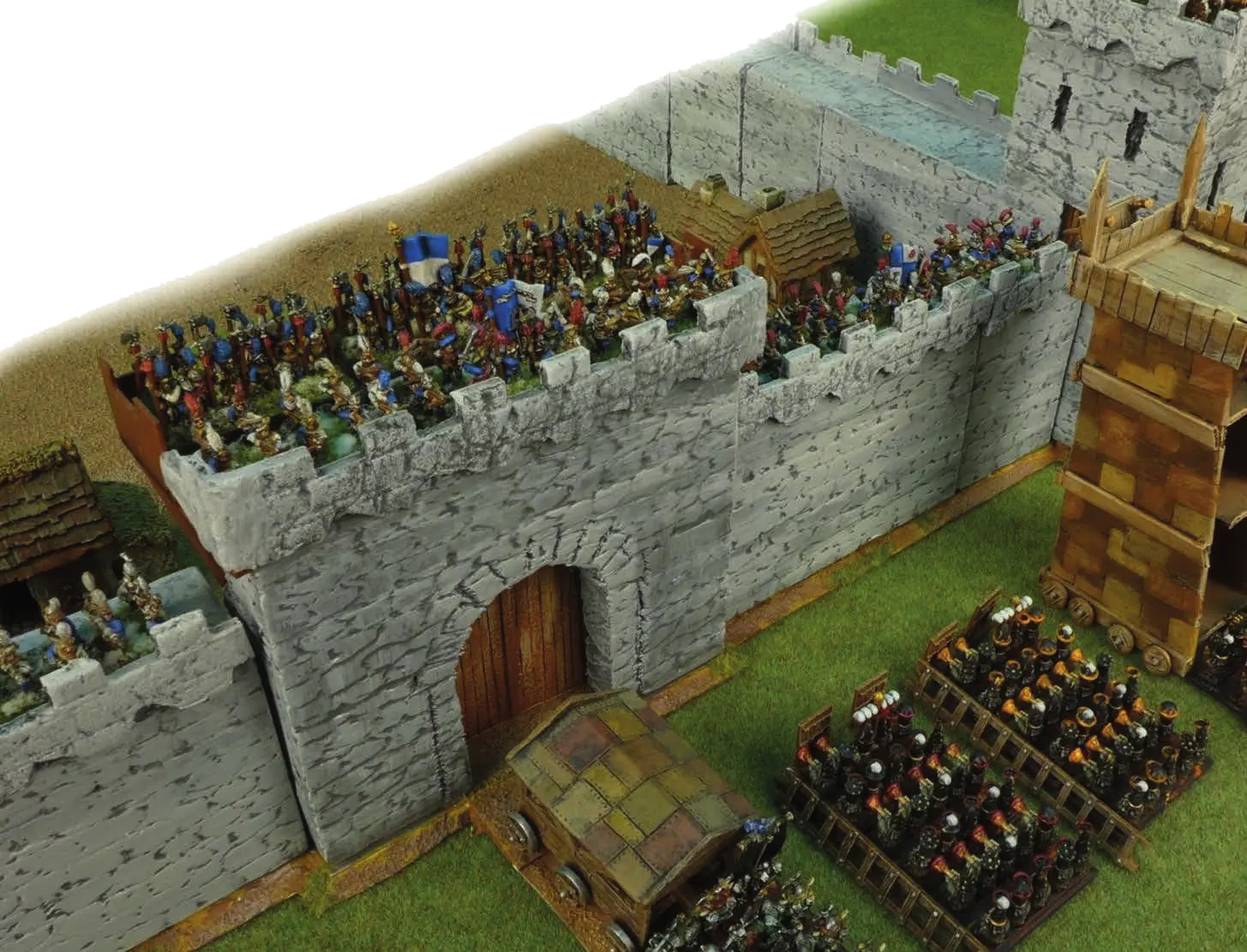
Naval operations
Another option to spice a campaign up is to add ship battles on sea. The main task of fleets in a campaign is to support ground operations on shore. Of course this is only possible when your map includes a sea. The main problem is that ship battles are not included in the Warmaster rules and so you would need to play them using some stand-alone rule system with its own models, such as the old Man O’ War game or Armada. For this reason the naval operation rules are optional and can be used only when at least two players agree on that.
|
The Warmaster Rules Committee is developing rules for naval battles, based on Man O’ War. See Warmaster Naval Battles on the WRC website for rules. |
Set sails!
Naval operations can only take place at sea, not on rivers. Players who agreed on involving naval operations can challenge each other to fight sea battles in the same manner as in ordinary ground battles.
A player who wins a sea battle gets a Naval Advantage over the defeated player. Naval Advantage means you can conquer a shore tile of the player defeated at sea for 1 empire point less (usually 2), while it costs 1 empire point more for the defeated player to conquer a shore tile (usually 4) of the player who has Naval Advantage over him. Note that a player still has to defeat another player in a Warmaster battle in order to conquer his shore tiles.
The Naval Advantage only makes it easier or more difficult depending on the situation at sea.
The Naval Advantage is carried over into subsequent campaign rounds and lasts until the player with the advantage is defeated in naval battle by any involved player. Involved players with no shore ports can still fight sea battles for Naval Advantage, however they cannot conquer another player’s shore tiles until a sea port is built.
